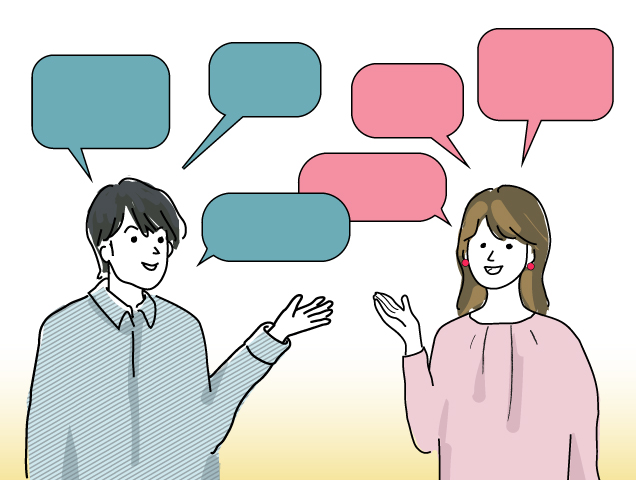Research News
May 30, 2023
- Literature and Human Sciences
Code-switching in intercultural communication: Japanese vs Chinese point of view
Clarifying the communication styles of the Japanese and Chinese
Context dependence in intercultural communication
OMU researchers found that Japanese and Chinese, who are considered to have high-context cultures, code-switch from high-context cultures to low-context cultures when communicating with people from each other’s countries. Interestingly, it was found that the Japanese do not engage in much code-switching with Chinese students in Japan.

When people communicate, speakers and listeners use information shared by both the parties, which is referred to as ‘context.’ It is believed that there are cultural differences in the degree of reliance on this context, with Westerners having a low-context culture, i.e., they speak more directly, and Easterners having a high-context culture, i.e., they are subtle and speak less directly.
Although Chinese are assumed to be in a high-context culture, Yamashina (2018) found that Chinese people are viewed as more direct speakers i.e., low-context cultural communicators by Japanese. A research team led by Professor Hiroshi Yama, from the Graduate School of Literature and Human Sciences, Osaka Metropolitan University, interpreted the results as that Chinese who know Japanese people try to be less context-dependent when communicating in Japanese. This is called ‘code-switching’. Generally, a low-context situation tends to arise when people engage in intercultural communication and interaction. The team found that Japanese and Chinese, who are considered to have high-context cultures, are code-switching from high-context cultures to low-context cultures when communicating with people from each other’s country. Furthermore, it was found that the Japanese do not engage in much code-switching with Chinese students in Japan.
This study provides empirical evidence that low-context cultural situations may arise when people engage in intercultural communication. This study also suggests that low-context cultures are more likely to be formed in environments with substantial intercultural interaction.
“The results of this research can be developed as a socioecological explanatory theory of how cultural differences between low-/high-context emerge,” explained Professor Yama. “The findings also provide hints for improving efficiency in actual communication situations. In the future, we will continue to examine the relationship between people's ability to adapt to life, contextual dependence, and code-switching ability.”
Their findings were published in Global Networks.
Funding
Japanese Society for the Promotion of Science, Grant/Award Number: (No. 18K03010)
Paper Information
Journal: Global Networks
Title: How do Japanese and Chinese view each other? Understanding the meaning of low context culture in intercultural communication.
DOI: 10.1111/glob.12440
Author: Changyi Wu, Hiroshi Yama, Norhayati Zakaria
Publication date: March 27, 2023
URL: https://doi.org/10.1111/glob.12440
Contact
Graduate School of Literature and Human Sciences
Hiroshi YAMA
E-mail: yama.hiroshi1204[at]gmail.com
*Please change [at] to @.